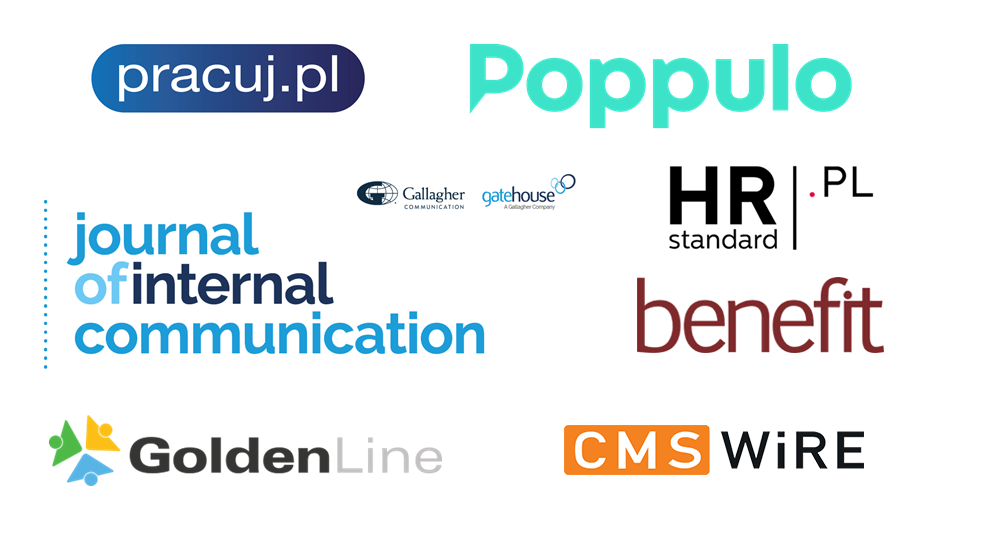

I’ve been often asked where to find questions to an internal communication audit – to surveys and focus groups or interviews. For sure not on the internet – I beg you not to do that. You may find really strange ideas there. With mistakes, unfortunately. If you really need to check them, do it for inspiration, but don’t copy and paste them to your list of the questions to be asked during interviews or in a questionnaire. During my training on building IC strategy, we talk about IC audits and learn how to create proper questions to the internal communication research. We analyse questions found on the internet to show the participants of how poor quality these internet surveys are. Let’s check now how do it better.
Step 1: Define your research topic
If a decision to organise an IC audit was taken in your company and you need to do it in-house, it’s worth sitting together with your team to discuss what you’d like to assess during this research. You may write down all the IC areas and then choose the ones to be assessed. If you carry out the audit with an external support, perform this task with them.
You need to decide if the audit will concern IC tools only or maybe IC processes and their participants. Or maybe you need to check the entire IC. All the ideas are OK, it depends on what you need to know and why. My recommendation: assess the whole internal comms to find out as much as possible about the field you are responsible for. Don’t focus on IC tools or processes only.
I know some people are tempted to add to the IC research some questions about, e.g. employer branding or the organisational culture or HR. It’s better to focus only on one field (internal comms in our case) to explore it deeply.
Step 2: Choose a research method
a) qualitative research
When you know what needs to be assessed, it’s time to choose a method to run your research. You can choose between the quantitative research (printed questionnaires or the electronic ones, or maybe both of them) or the qualitative one (focus groups or individual interviews).
If you choose the qualitative method, prepare a lot of big and small supporting questions and write them down. By writing ‘small questions’ I mean other questions concerning the big one which will help you dig deeply if the main answer for the big question is too short. Of course, these questions depend on the topic of the research which you define in the step no. 1. If your research is about the IC tools only, the questions will be mostly about it.
Why do I recommend to have many supporting questions around the big one? To go deeper and find out more. You may interview a not-so-open-to-talk employee who will answer with two words only. That’s why it’s good to be prepared by having other questions concerning the same issue, but asked in a different way to dig deeper into the topic you’re interested in. It’s also worth writing them down just to remember. Don’t do it if you feel you’re able to create them at once in a meeting. But I think it’s easier to do it earlier and rethink them before your research and just have them on your list.
When you have a list of the possible questions, check if they’re logical and understandable. Check if you don’t have too many closed questions as the employees may answer one word only. Focus on the open questions to let the employees talk.
b) quantitative research
If you choose a survey – a preparation of questions is a higher tier. First, go back to the topic of the IC research and then prepare the questions. Again, check if they’re understandable and logical. During interviews (the qualitative research) our language is less formal so if your employee don’t understand the question we may explain it to them. But if you send the questionnaire to all your employees via email – there is no space for changes. All the questions must be understood the same way by all the employees. And the number of questions is limited, that’s why all the questions must be simple, clear and well-considered.
It’s better to create the questions to the quantitative research after the qualitative part. Thanks to that, in the quantitative survey you may ask about the issues discovered during interviews. It’ll help you assess the scale of the problem mentioned by the employees in the first part of your research.
Step 3: What will these questions bring you?
What I do at the end of this preparation process is to analyse all the questions again to check what they will bring me after asking them. If they won’t help me assess the IC, I cross them out. It’s a waste of time. Especially, when the number of the questions needs to be limited. I always check if they’ll help me, e.g. build the internal communication strategy in the next step or an IC action plan of improvements. I really recommend going through this task. And it’s almost the end.
At the end, I give all the questions to read to someone who doesn’t take part in their creation and can assess them with a fresh mind. If you send the questionnaire to hundreds of your employees and will get 89 questions on what the author had in mind while writing this particular question you may be in trouble. So it’s better to spend some additional time on asking one or two of your colleagues to check if they understand the entire questionnaires.
My support
If you look for an external support in creating the audit questions (both for interviews or questionnaires), need help in choosing the best option of the IC research, need an extra pair of hands to organise the entire audit or would like just to consult your ideas or the results, feel free to contact my company.
******
Join me on:
• Facebook @behindtheicscenes
• Twitter @maja_biernacka
• LinkedIn
Photo: Pixabay.com





